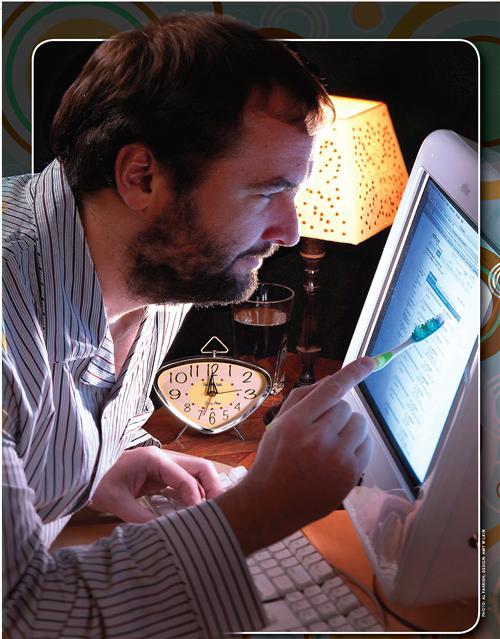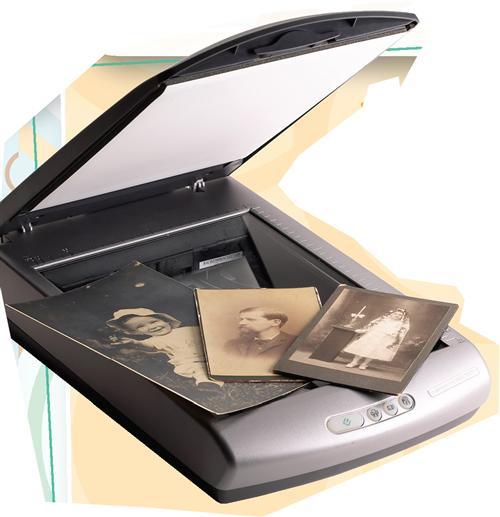Sign up for the Family Tree Newsletter Plus, you’ll receive our 10 Essential Genealogy Research Forms PDF as a special thank you!
Get Your Free Genealogy Forms
"*" indicates required fields
Your ancestors had hundreds of years to leave you family history clues, but you can’t even steal half an hour from your busy schedule to hunt for them. With all you have to squeeze in between breakfast and bedtime, who has time for genealogy?
You do. Yes, we’re talking to you. Thanks to the Internet, genealogy software and other breakthroughs, “doing genealogy” no longer has to mean long hours in library basements squinting at microfilm and pawing through shelves of dusty books hoping to spot an ancestral name. Even if you’ve got just a few minutes to banish the blank branches on your family tree — and even if it’s late at night when the library’s closed — you still can find family history clues. The possibilities for the midnight genealogist (or the up-with-the-roosters researcher) have never been richer than they are now.
You’ve run out of excuses — even “I’m too busy” — for not poking into your past. You can accomplish each of these 16 genealogical to-dos in less than 20 minutes. It’s time to get started … the clock’s ticking.
1. Determine a death date. You likely have lots of recent collateral kin who’ve passed on, but for whom you don’t have death dates. Twenty minutes is plenty of time to fill in these blanks using the Social Security Death Index (SSDI), available free at Web sites including FamilySearch <www.familysearch.org/eng/search/frameset_search.asp> (Click US Social Security Death Index), Roots Web <ssdi.rootsweb.com>, and One-Step Web Pages by Stephen P. Morse <stevemorse.org/ssdi/ssdi.html> (where you can simultaneously search several SSDI sites).
The SSDI’s 77.7 million records include Americans who were issued Social Security cards and whose deaths were reported to the Social Security Administration — in most cases, that means people who died after 1962. Looking for married (or widowed) women? Search on the married name.
I had a birth date of December 1922 for my relative George E. Grimes. In a flash, I found all 13 George E. Grimes in RootsWeb’s SSDI. I quickly scrolled to the only one born in December 1922 — Dec. 7, to be exact (a fact I could now add to my family tree file). My George E. Grimes died April 17, 2005, and the SSDI even gave me his last residence: Brevard County, Fla. Another click, on SS-5 Letter, brought up a form letter, all filled out except for my name, address and phone number, requesting a photocopy of Grimes’ Social Security application. I printed the letter, addressed an envelope and popped it in the mail, still well within my 20-minute limit.
2. Find immigrant ancestors fast. If 20 minutes isn’t long enough to slog through the Ellis Island passenger-arrivals database <ellisisland.org>, Stephen Morse’s slick One-Step Web Pages come to your aid again. Decide which Ellis Island search form — White, Blue or Gray — you should use, then access your chosen one at <stevemorse.org>. Not only do Morse’s tools plow through the database in a single search; they can turn up results the regular site’s search will miss. My Fryxell ancestors landed in America before the 1892 Ellis Island opening, but Morse’s White form helped me find a 1920 arrival for my great-grandfather Gustav — returning from a visit to the old country — in less than a minute. That left me 19 minutes to look for ancestors using Morse’s other One-Step search pages, which cover Castle Garden (Ellis Island’s predecessor), Galveston, Texas, and other ports.
3. Join a mailing list. A quick way to connect with other researchers studying your family and their stomping grounds is to sign up for an e-mail list. RootsWeb maintains one of the biggest and easiest-to-use gatherings of genealogy mailing lists <lists.rootsweb.com>, more than 30,000 at last count. You can pick by surname, place or topic (such as ethnicity and war). I’ve found geographic lists — typically by county — among the most useful for ferreting out facts and unbeknownst-to-me resources, and for connecting with experts on the places my ancestors called home. Signing up for an e-mail list of researchers interested in Macon County, Ala., for example (where my great-great-grandmother was married), was as simple as clicking on AL, then Macon, then Subscribe to ALMACON-L. I spent the rest of my 20 minutes searching list messages I’d missed, accessed via a click on Search the ALMACON Archives.
4. Pursue a patriot. Not every 20-minute genealogy project gets results immediately, but you can use your time to complete research requests that start the ball rolling. The Daughters of the American Revolution (DAR) Patriot Index Lookup Service <www.dar.org/natsociety/pi_lookup.cfm>, for instance, offers a free check of the DAR’s membership records (which contain applications that name qualifying ancestors). Just fill out the easy online form with information about your ancestor, click Submit, and a DAR volunteer will e-mail the results within a few days. That’s how I learned about the Revolutionary War service of my fifth-great-grandfather Maj. John Williams. The DAR form let me narrow the search with his birth and death dates and places, thus overcoming the challenges of his common name. Once you’ve confirmed an ancestor is in the DAR’s files, write away for a copy of the DAR membership application (“record copy”) bearing your ancestor’s name — the cost is $10 and instructions are at <www.dar.org/library/record_copy.cfm>. You also may be able to get copies of supporting documentation for approved post-1890 DAR applications via the DAR Library’s Search Service <www.dar.org/library/search.cfm>; nonmembers pay $15 for up to 10 pages.
5. Chase clues on paper. You can make surprising headway in 20 short minutes simply by organizing the unfiled papers collected in your research (including library photocopies and printouts from online work). Sorting your paper piles by family and — just as important — location can lead to fresh genealogical breakthroughs: In a quick paperwork assault on my Isle of Wight County, Va., ancestors, I realized I was filing finds relating to the aforementioned John Williams along with a family surnamed Pitt or Pitts, which my research didn’t link to the Williams clan until later, in North Carolina. But I had some possible Pitts ancestors in Isle of Wight, too. And here was a page from Early Virginia Immigrants showing a John Williams (possibly the great-grandfather of my Maj. John) arriving in 1643 — brought to America by a Robert Pitt (himself a candidate for my eighth-great-grandfather). That combined clue never would have surfaced if not for my 20-minute sorting stint.
6. Tour the boards. I started poking around again in my Pitts-Williams families after a tour of GenForum message boards <genforum.com> related to them; you also can try the similar boards at <boards.ancestry.com> (you don’t need a subscription to access the boards on either site). To make my visit to these massive message-board sites manageable in just 20 minutes, I picked one or two forums and checked each one using the site’s search feature. My strategy was to look for unusual first names that might signal my ancestors were under discussion: The all-too-common moniker John is hopeless in a Williams forum, but his brother Cowper might narrow the field to my family line. Geographic names also can help find wheat among the chaff, so I searched the Pitts forum for Warren, Ga., and Nash, NC, two counties to which my Pitts ancestors migrated.
7. Write a fellow researcher. That search for places where the Pitts lived pointed me to a bunch of obviously well-researched postings by a Billie Jean Gilmore. When you stumble across a fellow family historian whose interests overlap yours and who seems to know what she’s talking about, take a few minutes to send an e-mail. On GenForum, clicking on the name of the poster ushers you to pages with the person’s e-mail address and a link to his other postings. Clicking on an Ancestry.com poster’s name retrieves both the e-mail address and posting history on one page. When I saw Gilmore had posted to the Williams forum as well as Pitts, I knew she’d be worth contacting. So I composed a brief e-mail explaining how I found her name and my own connection to these families. A few days later, she wrote back — it turns out we’re distant cousins. Soon we were exchanging family group sheets and collaborating on the blanks in our pedigrees. Just a few minutes’ e-correspondence opened up a whole new research avenue.
8. Search with your software. If you record your family history using Family Tree Maker, the best-selling genealogy program, you can quickly look for online family facts using the software. Just highlight an ancestor’s name and pick Web Search Results from the little drop-down menu under Web Search Resources in the screen’s upper left corner (or go to View>Web Search Results in the top menu). Trying this trick with my great-great-grandmother Cornelia Chapman brought up more than 62,000 results. Fortunately — since time was short — Family Tree Maker listed them by “quality,” ranked from five stars on down. Most results require a subscription to Ancestry.com (its parent, MyFamily.com, also owns the software), so this method is a speedy way to see if a membership is worth your dime. Because Family Tree Maker “knows” your female ancestors’ maiden and married names, it finds hits on both: Among my five-star results were an 1843 Alabama marriage record for Cornelia Chapman and a 1910 US census listing under her married name, Cornelia Dickinson. Highlight each hit and click the View Online button on the lower left to open the matching search result on the Ancestry.com Web site.
You can do the same kind of thing with RootsMagic, which is integrated with the GenSmarts <www.gensmarts.com> utility. GenSmarts will search free sites for you, and you can configure it to scour the subscription Rites you have access to. If you have Family Tree Legends <www.familytreelegends.com>, you can use the GenCircles <gencircles.com> SmartMatching search technology from within [the program.
9. Create a timeline. Your genealogy software program probably can generate a timeline that graphically displays your ancestors’ lives over a span of years. In Family Tree Maker, for example, select View>Timeline and then click the Individuals to Include button (second from the top). You can customize your timeline to cover only a group of ancestors you’re having trouble with, and print the result to use as a reference. Similarly, in RootsMagic, select Reports>Lists>Timeline list to chart one individual’s events or an entire family’s.
Creating a timeline was the only way I could ultimately unscramble my early Dickinson ancestors, all of whom seemed to be named Robert, Willis or Michael. You may have to test several theories: Alter who’s related to whom and generate a fresh timeline and pedigree chart so you can see what scenario makes the most sense.
10. Place your ancestors on the map. Making a map of the places your ancestors lived and when they lived there shows you migration patterns and connections you may have overlooked. For example, clans that intermarried often migrated together, so you can use family A’s migration pattern to hunt for family B’s origins. Before today’s technology, this would have been a tedious, time-consuming chore. But new software makes it easy to map your ancestors in less than 20 minutes: RootsMagic’s Family Atlas utility ($29.95, <www.familyatlas.com>) plots locations from data in RootsMagic, Family Tree Maker, Personal Ancestral File and Legacy Family Tree, as well as GEDCOMs (genealogy software’s universal file format). Or try Progeny Software’s Map My Family Tree ($49.95, <www.progenygenealogy.com>), which works with nine genealogy programs plus your GEDCOM files. If you already have Family Tree Maker, you can use it to generate a basic map and geographic sort of your ancestors; just go to View>Map.
11. Order military records. Though you’ll need to exercise patience before your results actually arrive, ordering an ancestor’s military records is a snap thanks to the National Archives and Records Administration’s Order Online service <eservices.archives.gov/orderonline>. First, you’ll have to create an account with a user name and password, and log in. Compiled Military Service Files are the most-requested records; just select this option under Made-to-Order Reproductions, then click Add to Cart to get a screen where you fill in what you know about your ancestor veteran. Next, fill in your billing and shipping information — copies cost $17 including postage. That’s all there is to it. This system covers all pre-WWI records; I used it to get copies of my Confederate great-grandfather William Francis Dickinson’s Civil War service records. For more-recent military records, use the similarly speedy eVetRecs system at <archives.gov/veterans/evetrecs>.
12. Take a shortcut to censuses. If you happen to be at a large public library (sorry, our 20-minute challenge doesn’t include travel time), try this trick to save hours of scrolling through census microfilm: Check the card catalog or the library’s genealogy section for a book of census transcriptions. While more-recent, voluminous censuses seldom have transcriptions or abstracts, many earlier enumerations (typically, 1880 and before) have been reproduced in brief or at least indexed and published in books. If the book is a transcription or abstract, rather than an alphabetical listing by name, it should have an index so you can find ancestors in a flash. These volumes may be arranged by state, by county or both. I located my North Carolina ancestors, for instance, in three books at the Public Library of Cincinnati and Hamilton County <www.cincinnatilibrary.org>. A statewide census index covers 1830; I also used books on Edgecombe and Halifax counties. If you step and scroll lively, you should be able to go from catalog to book to the right microfilm page in less than 20 minutes.
13. Search library databases from home. If the library’s closed or time’s too tight to drive, remember most major libraries let cardholders tap into online resources from the comfort of home. The Cincinnati library, for example, grants anyone with a library card and a PIN free access to HeritageQuest Online via its Web site. Think how much could you accomplish in just 20 minutes with this database of selected US census records (1790 to 1930) and thousands of family and local histories, plus a comprehensive subject index of more than 1.6 million genealogy and history articles. Visit your public or state library Web site, or ask at the reference desk about remote access to HeritageQuest Online. Also see the partial list of libraries with the service at <eogen.com/heritagequestonline>.
14. Get free software. As we noted in task 5, the better-organized your family information, the clearer the clues will be. If you need a program to put order to your data, get the latest version of Personal Ancestral File (PAF). The best part? It’s free. Click the Download PAF link at the bottom of the FamilySearch home page <www.familysearch.org> to get started. The English-language PAF 5.2 weighs in at 9.7MB, so you should have no trouble downloading it in less than 20 minutes on any sort of broadband connection such as cable or DSL. (Sorry, dial-up modem users, I clocked it at 30 minutes on a 56k line — but your active participation is required for less than two minutes.)
Already have PAF? Spend even less time downloading the 7.8MB PAF Companion. The free basic version lets you create colorful ancestor and descendant charts, but is limited to three generations per chart. For just $6.75, you can upgrade to the full version, which lets you print unlimited generations and includes 10 additional charts and reports. The only catch: You must be running Windows (95B or later) on your PC.
15. Scan old family photos. Does scanning old photos to preserve and share seem too time-consuming to make progress in a mere 20 minutes? I’m just as impatient as you are — the wait for the dang scanner to warm up, and then for it to buzz back into position after each scan, is interminable. So don’t scan your photos one at a time. Most flatbed devices accommodate three or four snapshot-size photos at once, letting you scan them all in a single pass. Using your scanning software or a photo editor such as Photoshop Elements, you can select each picture from the batch, copy it and paste it into its own file. You should be able to scan 15 to 20 photos in 20 minutes.
16. Upload your family tree. Sure, this might seem more like giving than getting something done, but you’ll quickly learn how sharing your family history brings rich rewards. Before you know it, distant cousins will be contacting you to report on their own research and collaborate on tough ancestral puzzles. But do you really have time to upload your family tree to a pedigree database such as WorldConnect <worldconnect.rootsweb.com> or GenCircles <gencircles.com/globaltree/upload>?
I timed the entire process to see how long it’ll really take you. Unless you have a humongous family file, exporting a GEDCOM shouldn’t take you more than two minutes. Registering with the Web site where you want to share your file is another two minutes max, even if you agonize over your password and user name. Then you simply upload your GEDCOM. My relatively large Dickinson file — containing nearly 1,800 individuals, along with extensive sources and notations — exported as a 556K GEDCOM. On my broadband Internet connection, the upload took all of eight seconds. It’d be just a couple of minutes even if you use a pokey dial-up modem. Export, register and upload in less than 20 minutes? No problem.
ADVERTISEMENT






